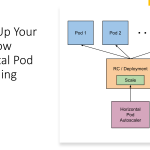Introduction
In today’s fast-paced world, the need for rapid and secure software development has never been more crucial. As organizations strive to meet these demands, the DevSecOps approach has emerged as a powerful solution that integrates security practices into the DevOps process. By combining development, security, and operations, DevSecOps enables teams to create high-quality, secure applications at a faster pace. In this blog post, we will provide an introduction to DevSecOps and explore real-world examples of organizations that have successfully adopted this approach.
Understanding DevSecOps
DevSecOps, short for Development, Security, and Operations, is a methodology that aims to integrate security practices throughout the software development lifecycle. This approach fosters collaboration between development, security, and operations teams, ensuring that applications are secure, compliant, and robust from the start. By embedding security into each stage of the development process, organizations can mitigate risks, streamline compliance, and reduce the overall cost of securing their applications.
Real-World Success Stories
Many organizations across various industries have embraced DevSecOps to improve their security posture and accelerate software development. Here are a few notable examples:
- Etsy: Online marketplace Etsy adopted a DevSecOps approach to improve the security of its platform while maintaining a rapid release cycle. By integrating security tools into their CI/CD pipeline, automating security testing, and fostering a culture of shared responsibility, Etsy has significantly reduced the risk of security breaches and improved the overall quality of its platform.
- Adobe: As a leading software company, Adobe transitioned from a traditional development model to a DevSecOps approach to enhance the security of its products. By automating security processes and adopting a risk-based approach to vulnerability management, Adobe has significantly reduced the number of security incidents and streamlined its compliance efforts.
- Fannie Mae: The financial services company Fannie Mae adopted DevSecOps to modernize its software development practices and improve the security of its applications. By implementing automated security testing, continuous monitoring, and risk-based prioritization, Fannie Mae has reduced its vulnerability count by 30% and decreased its time to remediate security issues.
- Capital One: The financial institution Capital One embraced DevSecOps to ensure the security and compliance of its digital products. By integrating security into their CI/CD pipeline, automating security testing, and fostering a culture of shared responsibility, Capital One has accelerated its development process while maintaining a strong security posture.
These examples demonstrate the power of DevSecOps in driving both security improvements and development efficiency. Organizations that adopt this approach can experience numerous benefits, including reduced risk, faster deployment, and improved compliance.
Conclusion
DevSecOps is transforming the way organizations develop, deploy, and secure their applications. By integrating security practices throughout the software development lifecycle, teams can create high-quality, secure applications at a faster pace. The success stories of companies like Etsy, Adobe, Fannie Mae, and Capital One underscore the value of adopting a DevSecOps approach. As the digital landscape continues to evolve, embracing DevSecOps can help organizations stay ahead of the curve and ensure the security, compliance, and robustness of their applications in an increasingly complex environment.

